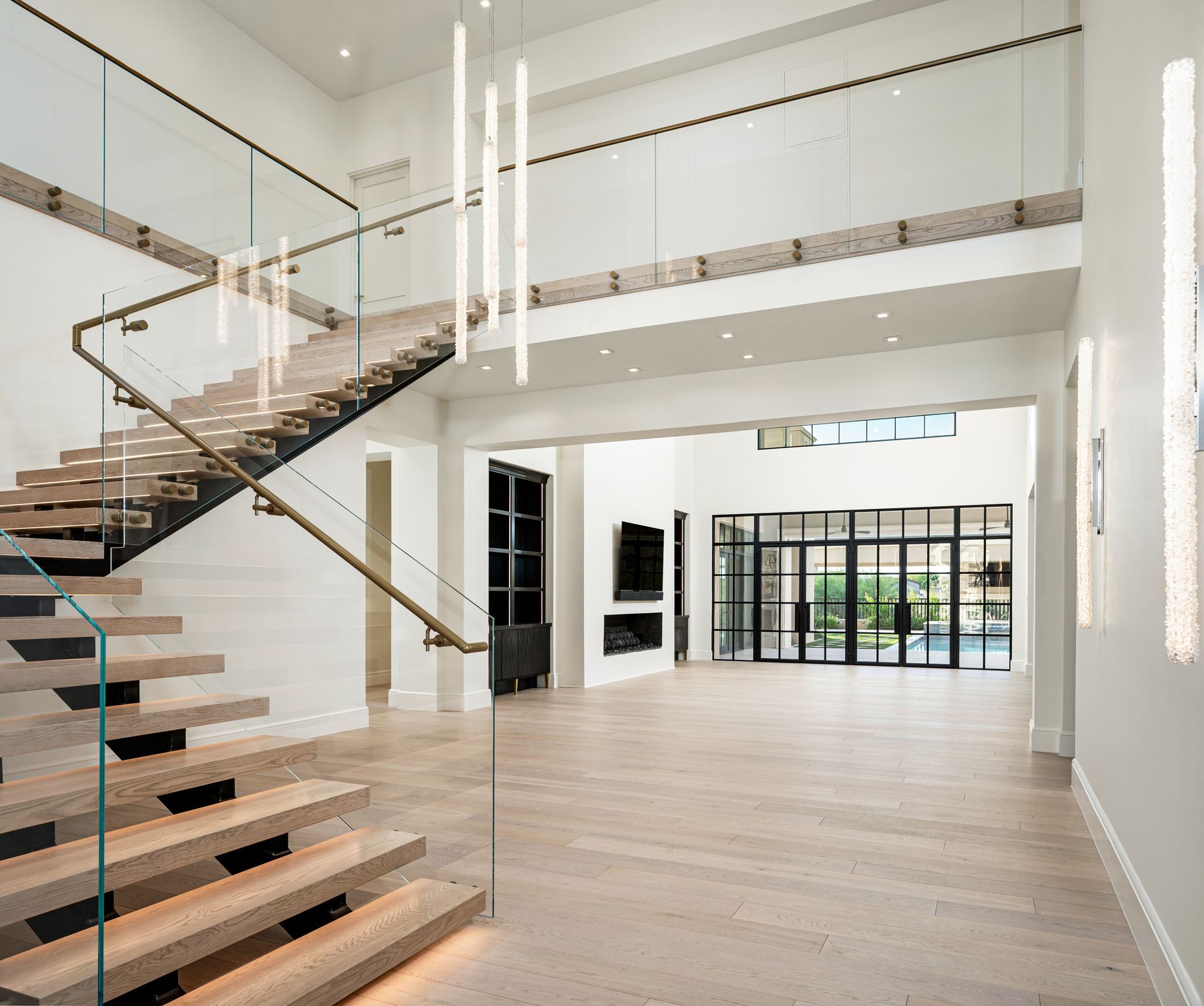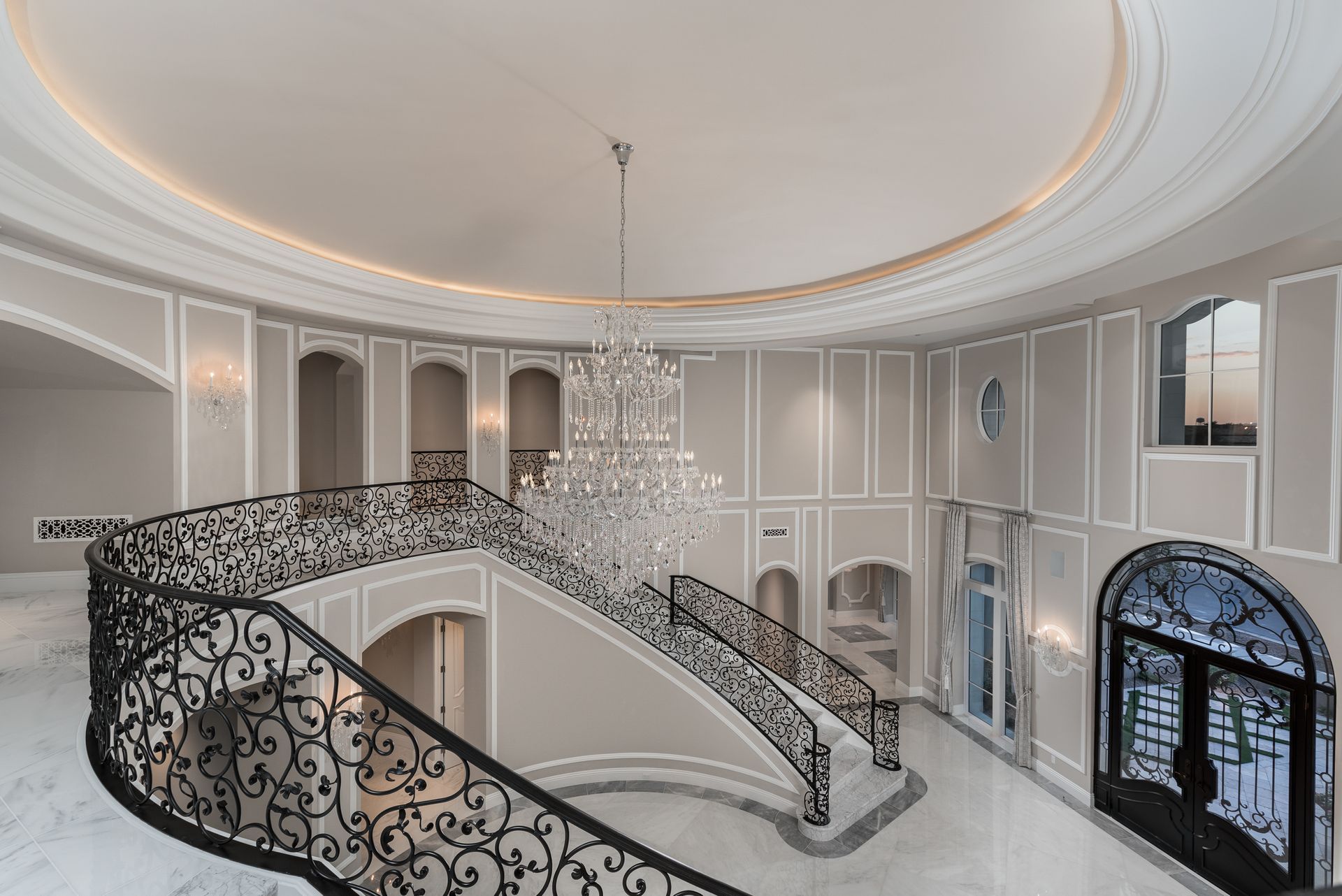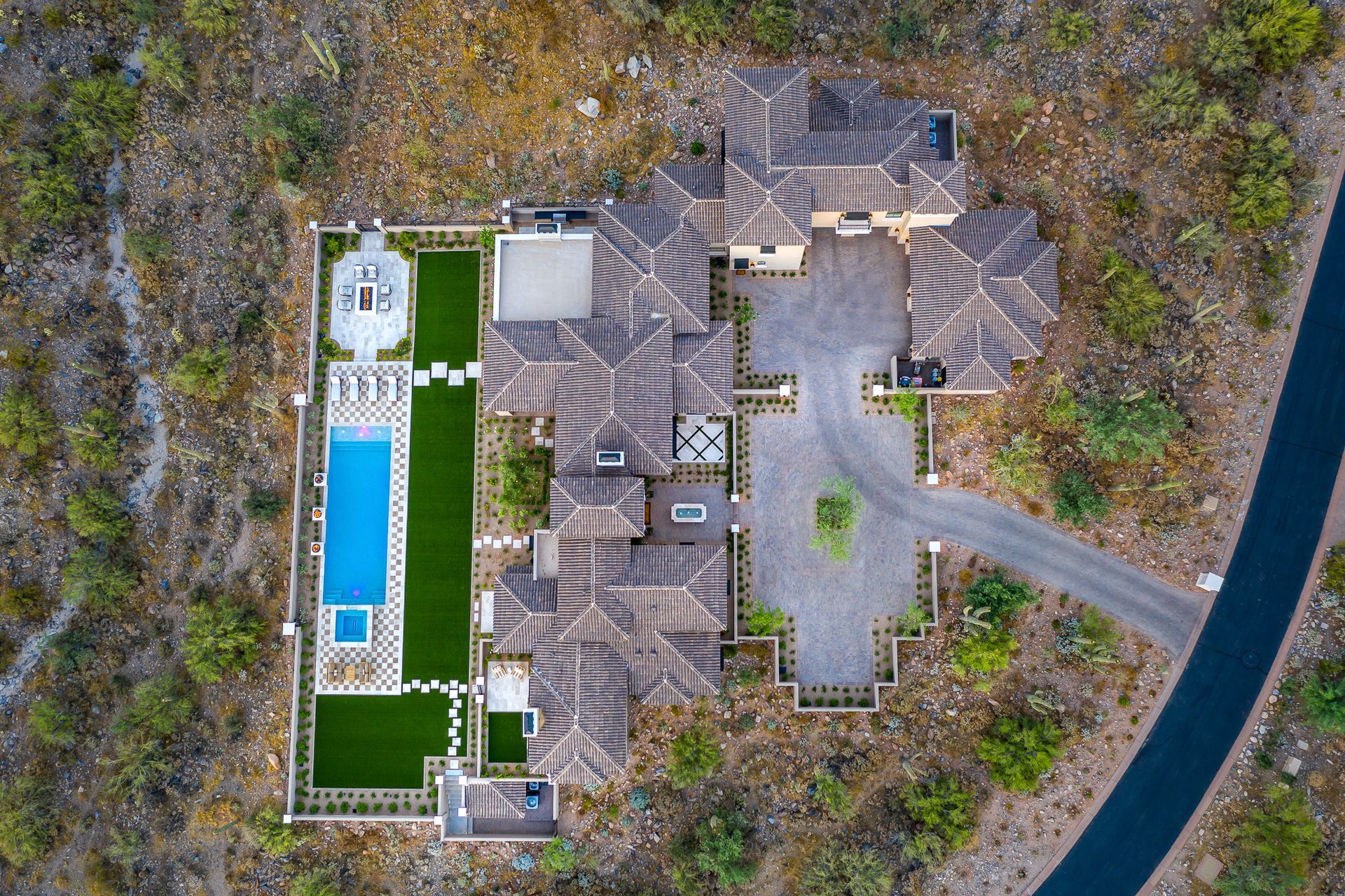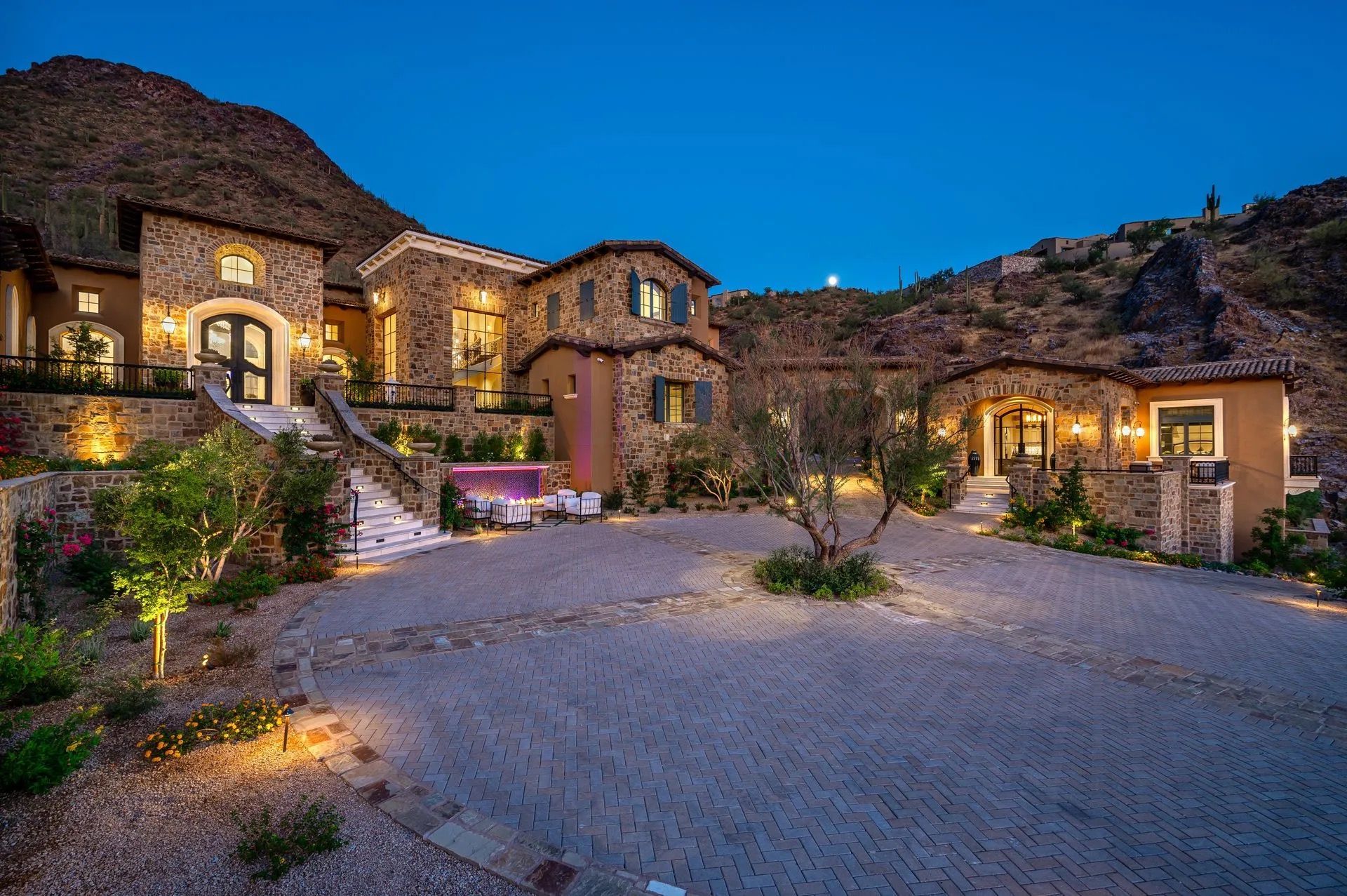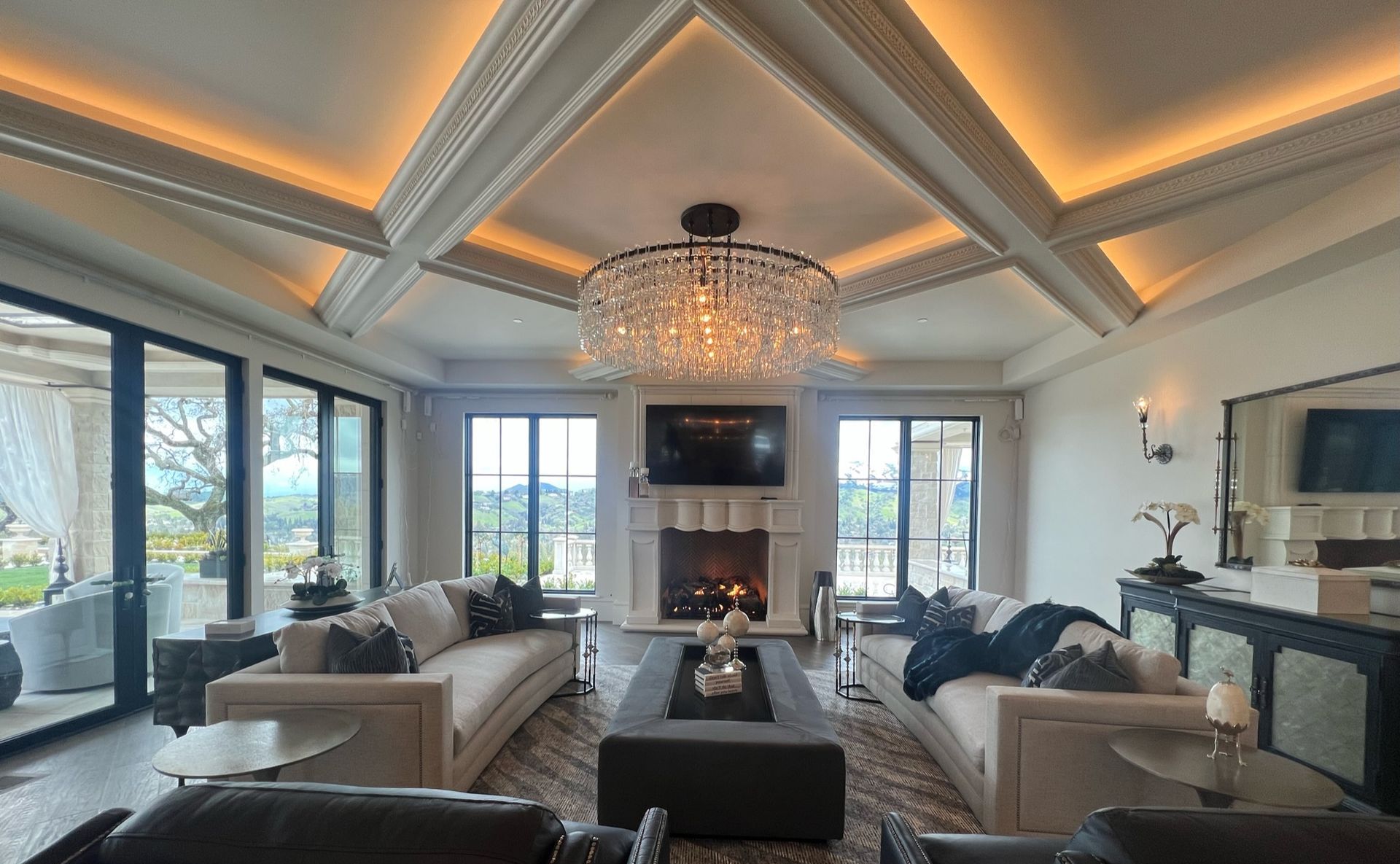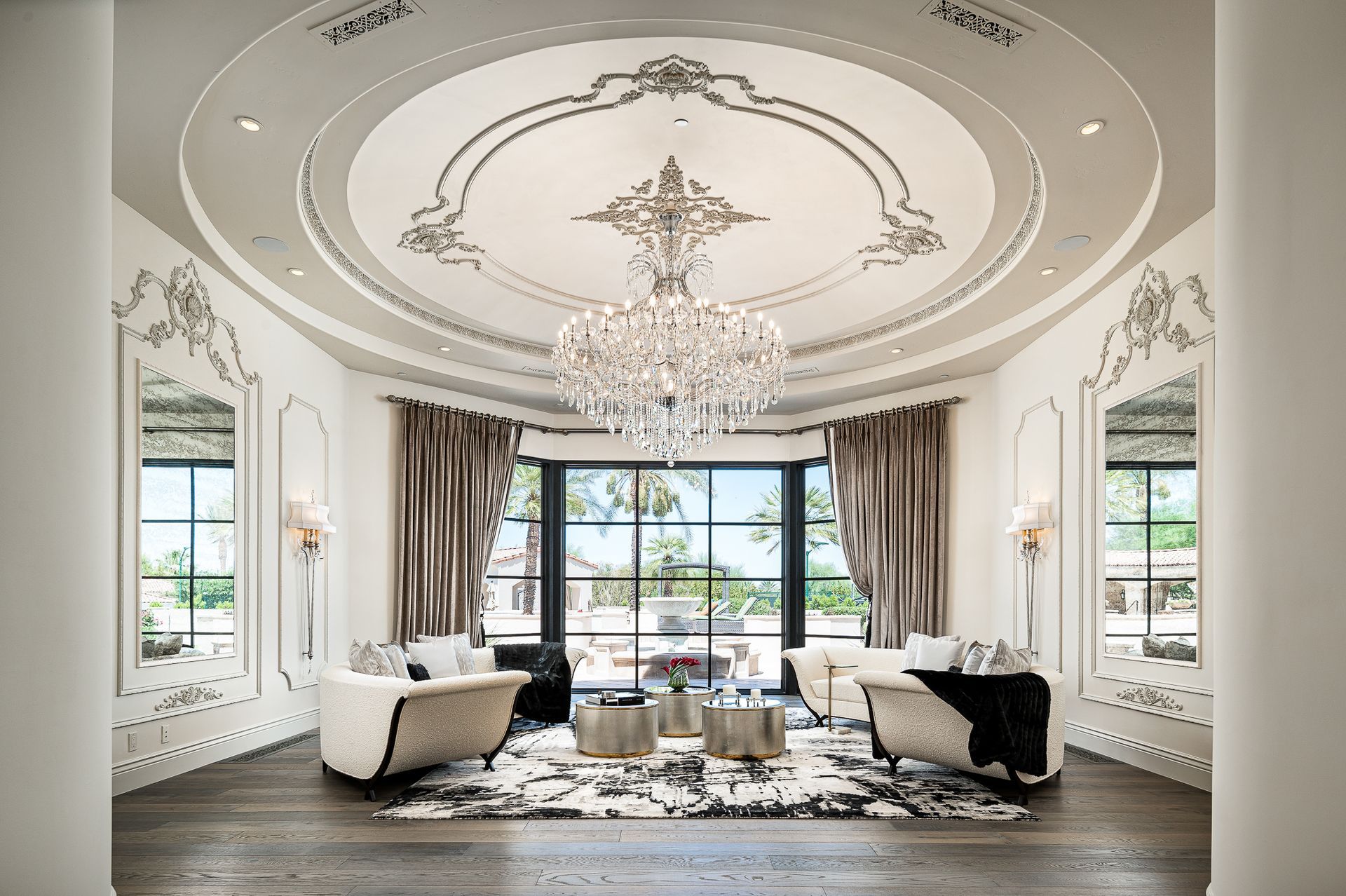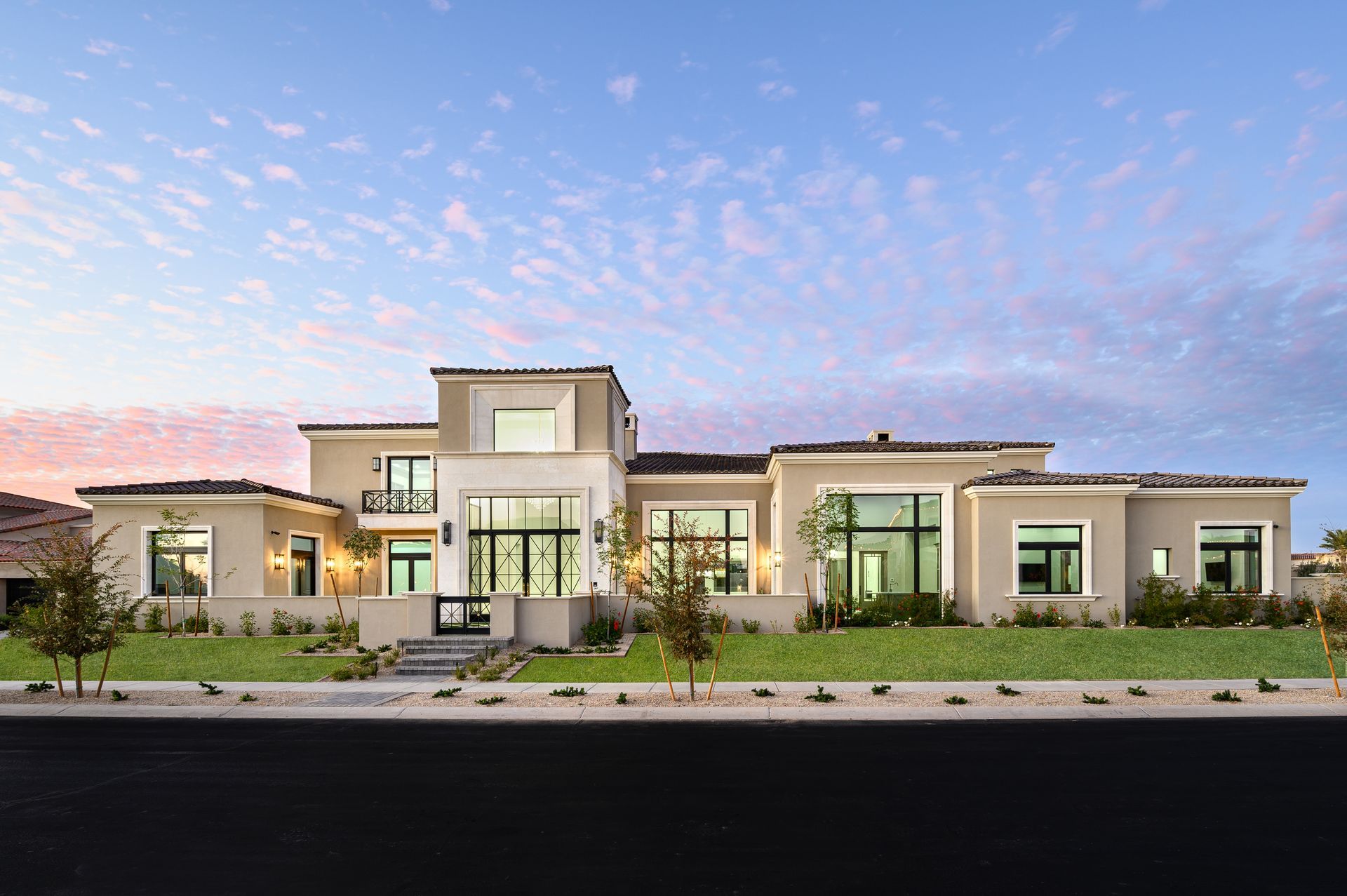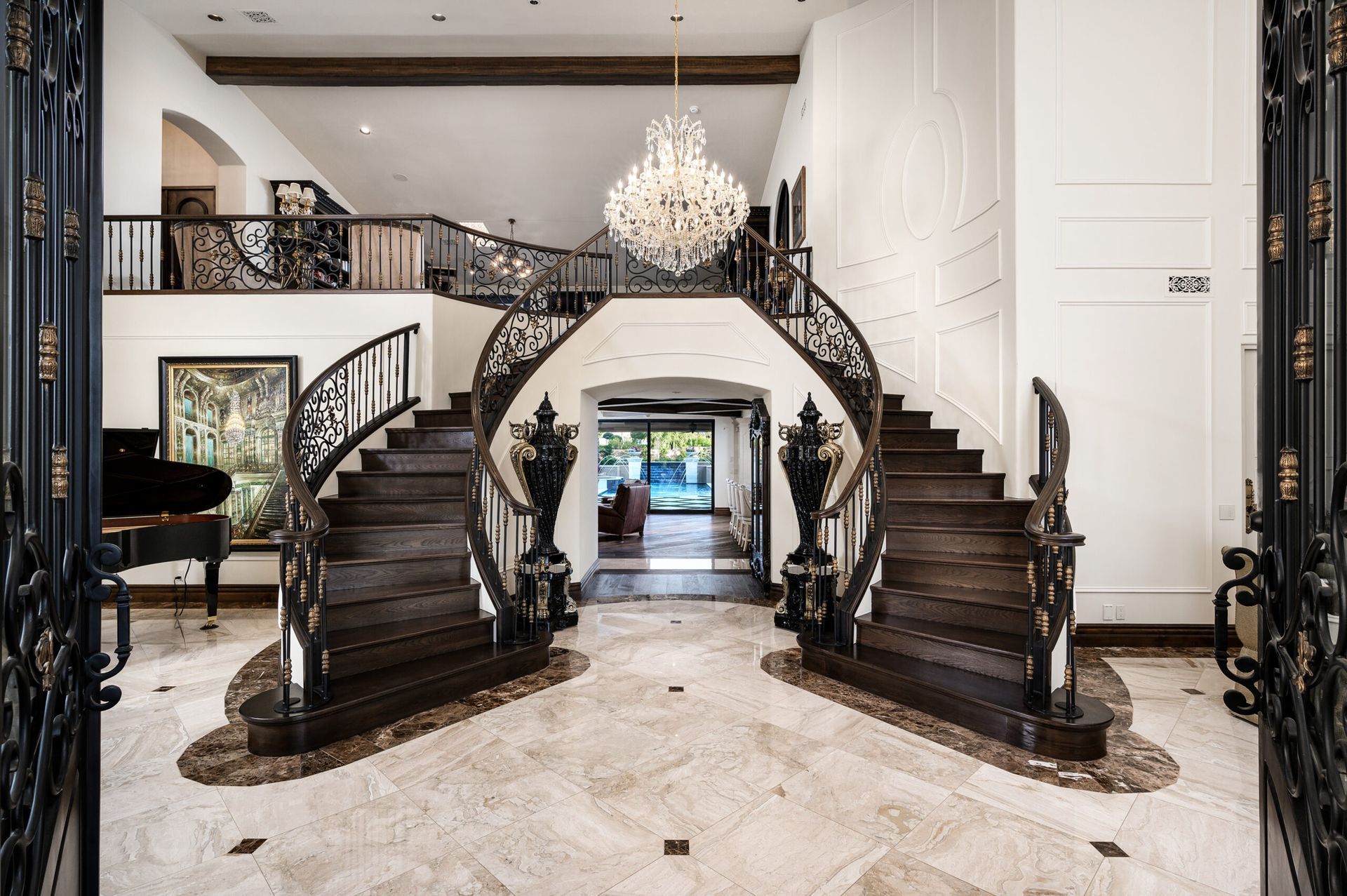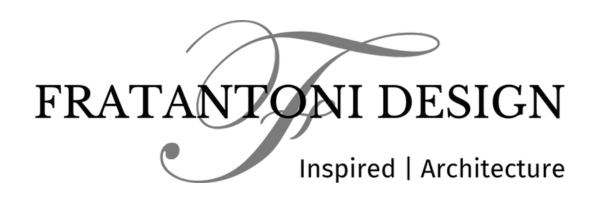Sculptural and Curved Architecture: Replacing Angles with Flow
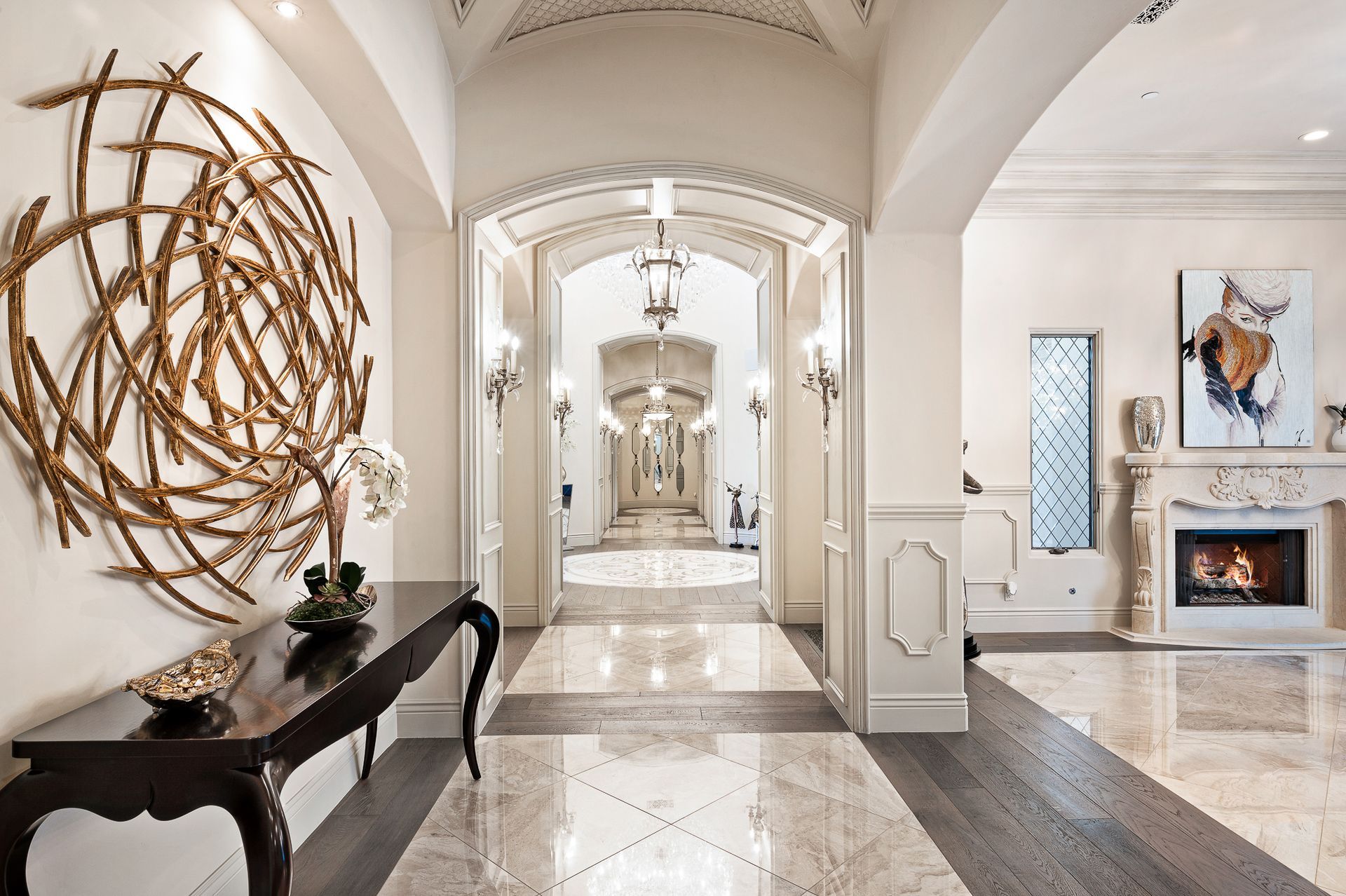
Luxury architecture has entered an age of expression. For decades, right angles and linear geometry defined modern design, emphasizing precision and control. Today, a new philosophy is emerging that embraces curves, arcs, and flowing forms. These sculptural shapes create movement and harmony, allowing spaces to feel more natural and emotionally engaging.
At Fratantoni Design, we believe that great architecture should be as graceful as it is functional. Curved forms represent a return to organic design, reconnecting homes to the natural world and the human experience. They soften the hard edges of modernism and bring rhythm to the geometry of living. This architectural shift is not only visual but emotional, reminding us that structure can be both powerful and poetic.
Why Curves Inspire Emotion in Architecture
Curves are inherently human. They reflect the forms of the natural world, from the sweep of a hillside to the arch of the sky. These shapes evoke calmness and connection, which is why people often describe curved spaces as more welcoming and soothing than rooms defined by straight lines.
In luxury homes, curves achieve a rare combination of refinement and warmth. They suggest movement, guiding the eye naturally through a space while maintaining a sense of order and proportion. A curved ceiling can lift a room with subtle grandeur, while a rounded wall can create intimacy and softness. Curves transform the experience of moving through a home, turning each transition into a journey rather than a series of stops.
At Fratantoni Design, we use curvature to achieve harmony between strength and serenity. Each arc and line is designed to balance energy and tranquility, creating architecture that feels alive and timeless.
The Historical Roots of Sculptural Architecture
Curved architecture is not new. Ancient civilizations used rounded forms to symbolize unity and divinity. The Romans perfected the use of arches and domes to create monumental spaces that celebrated engineering and beauty. During the Renaissance, curves reappeared in cathedrals and palaces, emphasizing movement and light.
In the twentieth century, modernism replaced ornamentation with geometry, favoring sharp angles and clean lines. Yet even in that minimalist language, architects such as Oscar Niemeyer and Eero Saarinen reintroduced the power of the curve, demonstrating that softness could coexist with precision.
Today, curved architecture represents the next chapter in this story. It reflects a contemporary desire for fluidity, natural light, and emotional connection. By blending technological innovation with sculptural artistry, architects are once again proving that form and feeling can evolve together.
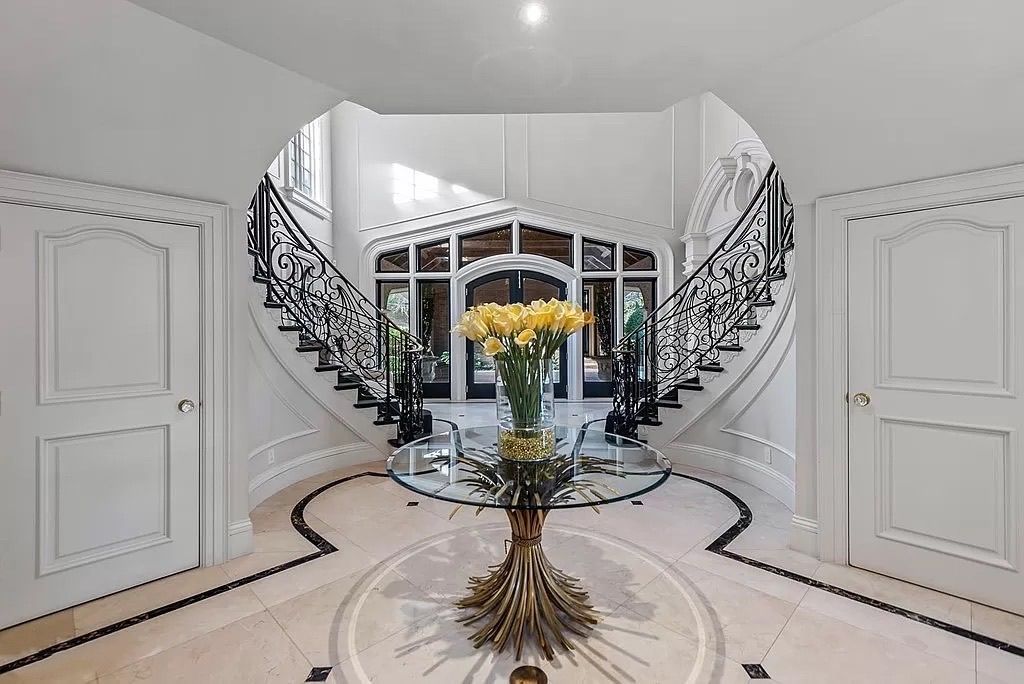
Movement and Space
Curved architecture is about more than appearance. It transforms how people move through a home. A curved hallway, staircase, or façade creates a sense of flow, drawing the eye forward and softening transitions between rooms. Unlike rigid corners that divide space, curves create continuity and balance.
The human body naturally follows curved lines. This is why circular and sweeping spaces feel intuitive. When designed with proportion and intent, curved elements connect each room into a cohesive whole. The result is a home that feels graceful and alive, with movement that reflects the rhythm of daily life.
Fratantoni Design often incorporates these principles when creating luxury residences. Our architects use curves to define spaces without walls, to sculpt light, and to guide sightlines toward architectural focal points. The home becomes not just a structure but a living work of art.
Materials that Bring Curves to Life
Material selection is vital in expressing curvature. Different materials can enhance the visual and tactile experience of a sculptural form. Stone, wood, plaster, and metal all respond uniquely to light and touch, allowing curves to convey texture and emotion.
Stone conveys strength and permanence. When shaped into arches or circular columns, it expresses elegance with a sense of stability. Wood introduces warmth and softness. Whether it appears in curved ceilings, paneling, or cabinetry, it creates an atmosphere of craftsmanship and comfort.
Plaster provides a smooth surface for continuous flow, perfect for rounded walls and domed ceilings. Metal and glass allow for precision, transparency, and modern sophistication. When curved, these materials reflect and refract light, adding depth and dimension.
Light as a Sculptural Medium
Light reveals the soul of architecture. It defines texture, accentuates form, and brings movement to stillness. Curved architecture interacts with light in ways that flat surfaces never can. It catches, diffuses, and reflects illumination throughout the day, giving spaces a dynamic quality that changes with time.
Natural light flows differently across curved walls. It moves gently, creating soft shadows that emphasize shape and depth. At night, artificial lighting enhances this effect. Cove lighting, recessed fixtures, and concealed LED strips accentuate curvature and provide an ambient glow.
Our architects at Fratantoni Design consider light as part of the structure itself. Windows, skylights, and openings are positioned not only for function but for artistry. As the sun moves, it paints each curve with subtle variations of tone and shadow. The result is an atmosphere that feels alive, serene, and ever changing.
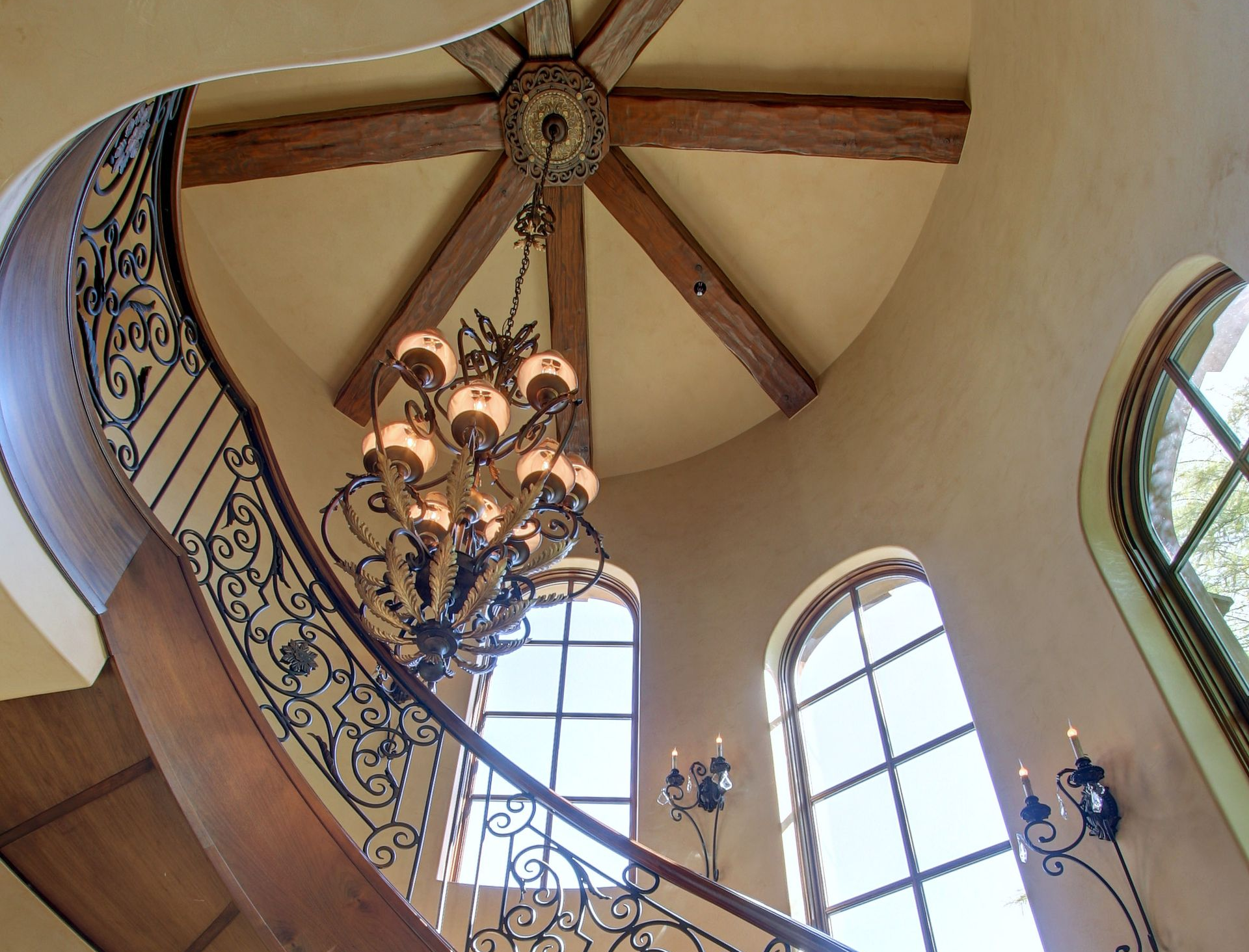
The Structural Art of Building Curves
Behind every elegant curve lies a foundation of precision. Creating curved architecture requires technical expertise and collaboration between architect, builder, and craftsman. Each radius must be mathematically accurate and structurally sound.
Advanced modeling software now allows architects to visualize and perfect complex forms before construction begins. Structural engineers then translate these digital models into real materials that maintain both strength and beauty. Every beam, joint, and surface must align perfectly for the curve to appear effortless.
At Fratantoni Design, craftsmanship remains central to this process. Our team works closely with artisans who shape materials by hand, ensuring that technology and tradition blend seamlessly. The result is architecture that feels organic yet precise, expressive yet enduring.
Curves in Interior Architecture
Curvature inside the home creates intimacy and elegance. Arched doorways frame transitions gracefully. Curved staircases become sculptural centerpieces. Rounded ceilings can open a space, while gently contoured walls provide softness and flow.
Curves can also define zones within open-concept layouts without the need for partitions. A circular dining area or sweeping hallway can naturally distinguish one space from another while maintaining continuity.
Fratantoni Design incorporates these elements into interiors to create balance and refinement. Each curve is proportioned carefully to complement the furniture, artwork, and architectural detailing. The result is harmony between structure and interior design — a cohesive expression of beauty.
Curves in Exterior Architecture
The use of curvature extends beyond interiors. On the exterior of a luxury home, curved forms create rhythm and visual interest. Arched windows, rounded balconies, and flowing façades provide softness that contrasts beautifully with the landscape.
Curved walls can frame gardens or courtyards, while sweeping rooflines mirror the horizon. In coastal or desert environments, curves integrate architecture with nature, blending the home into its surroundings. The movement of wind and light becomes part of the design, enhancing the sense of place.
Fratantoni Design uses these principles to create homes that feel timeless and connected to the land. Each curve becomes part of the story of the property, linking the built environment with the beauty of its natural context.
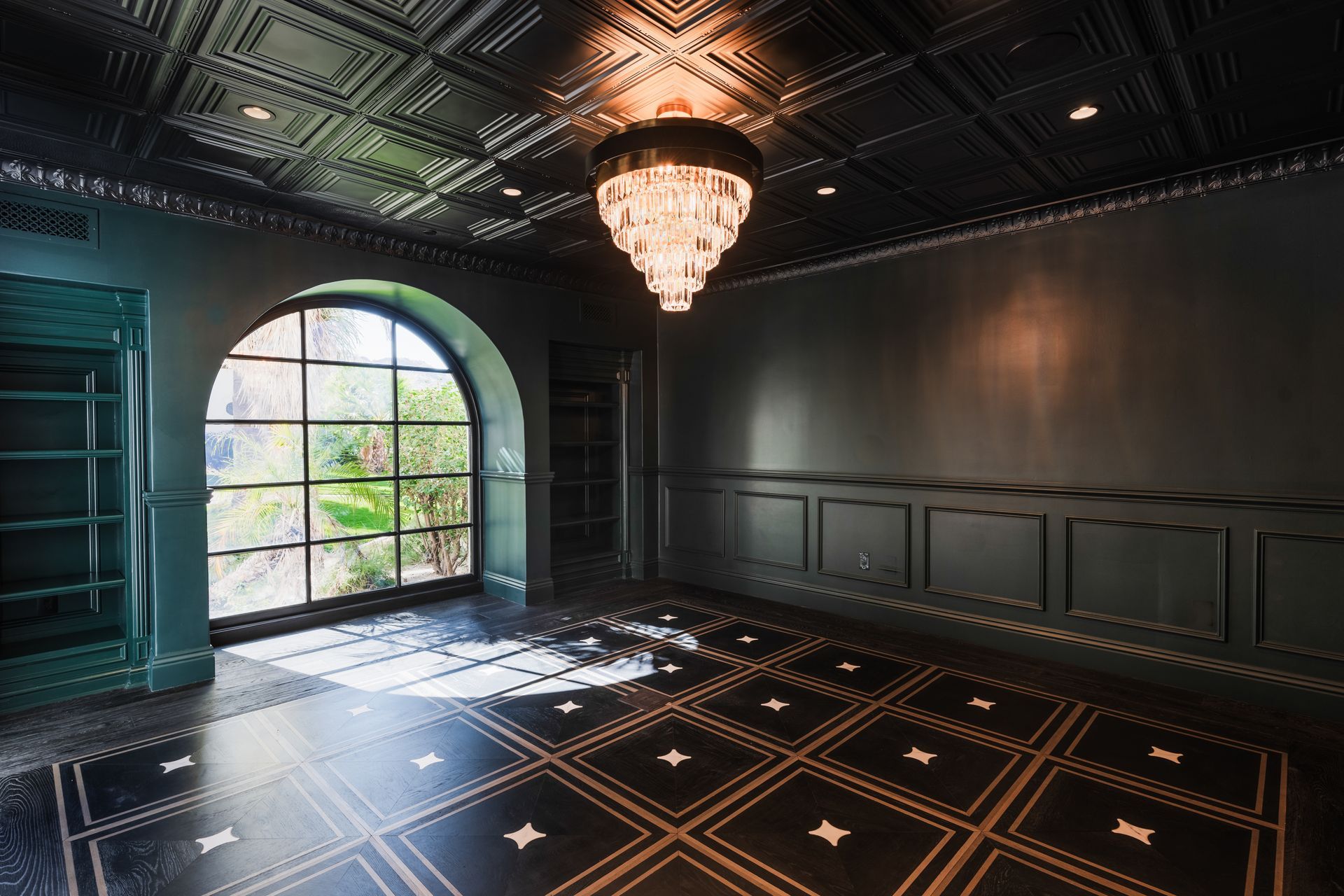
Emotional Connection Through Form
Architecture has the power to influence emotion. Straight lines communicate structure and order, while curves evoke comfort and openness. In residential design, this emotional dimension matters deeply. Homes are not only places to live but spaces that shape how people feel.
Curves foster a sense of calm and continuity. They soften boundaries and invite exploration. They also encourage interaction with light and texture, allowing residents to experience their home in new ways each day.
At Fratantoni Design, we strive to design homes that move people. Every curve is drawn with intention, every surface considered for how it will make the homeowner feel. This attention to emotional experience transforms architecture from static form into living art.
Architecture in Motion
Sculptural and curved architecture represents a new era of design, one that celebrates fluidity, balance, and the artistry of form. It replaces rigidity with rhythm, transforming the home into a living composition of movement and light.
At Fratantoni Design, we continue to push the boundaries of architectural expression, blending classical inspiration with modern innovation. Our work proves that luxury is not defined by complexity but by intention, the art of shaping space with purpose and emotion.
Curves remind us that architecture, like nature, thrives in motion. When a home flows with grace, it captures something truly timeless: the feeling of harmony between art, structure, and life itself.
Call to Action
Ready to begin designing your dream home with sculptural architecture that embodies beauty and flow?
Contact Fratantoni Design today to collaborate with our award-winning architects and bring your vision to life with a design that transcends angles and embraces artistry.
Contact Us
